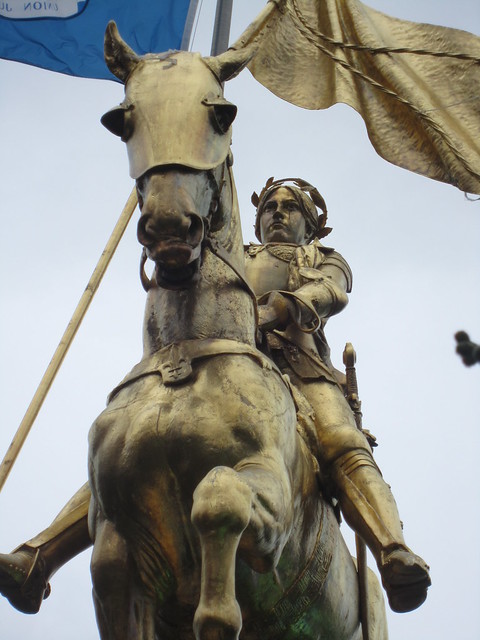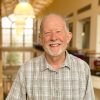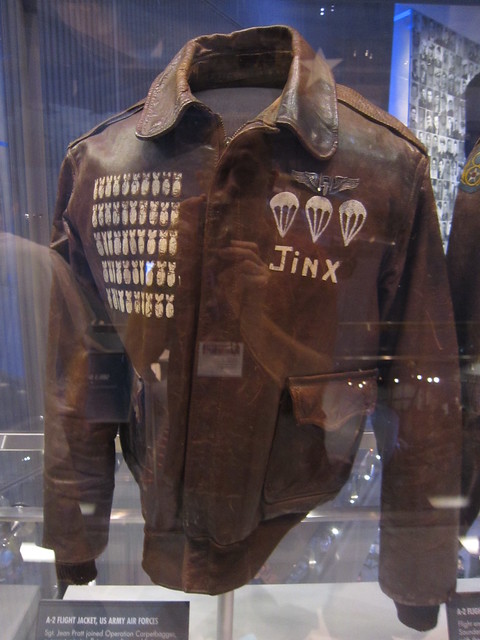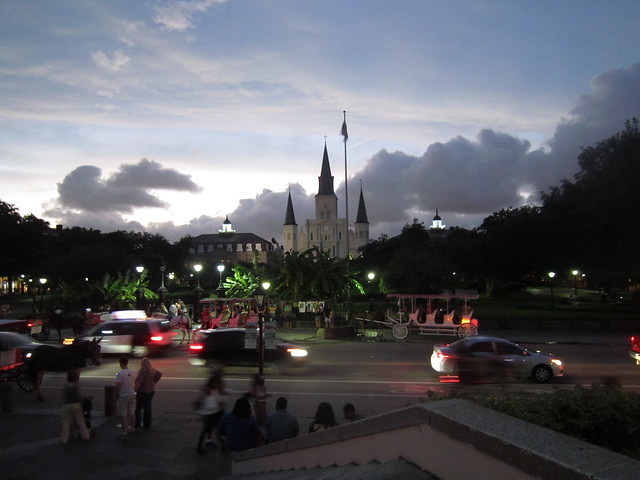This article is more than 5 years old.

Joan of Arc Monument given by the people of France to the people of New Orleans
One of the most important reasons for attending a conference is hearing new voices and leaders in the field. Another advantage is making contacts with other professionals. SAA gave me that opportunity. I spent some real quality time with members of the Preservation Section, learning about them, their background and expertise. I enjoyed these discussions as much as any of the sessions and it will help me immensely in my work with the SAA Preservation Section and here at ZSR.
Web Archiving Roundtable
This is a new group in SAA, and it was an enlightening session because I really think Rebecca and I both realized that our web archiving is not only in good shape, but ahead of the curve. We heard short presentations from BYU, Stanford, Northwestern and Colby Sawyer College. One of the primary issues we discussed was: do you notify an institution or organization that you are archiving their site? BYU uses the ARL standard for fair use in web collecting , which suggests libraries have the right to collect web material for research value and as a continuation of their area of research interest. Some web archivists do ask permission to archive sites, but it is very early and there are really no established best practices yet. While some institutions archive sites on the web by seeing this as Fair Use, others follow the advice of their legal counsel. These institutions think they should ask permission for anyone who is not officially part of the university. Some attorneys also thought it may violate terms of service for social media sites if they archived the content without asking permission (to get around this, some institutions take screenshots or create pdf versions of sites.
Plenary Session
I like the opening session for some reason. I guess it officially gets me in the groove at SAA. There was the usual stuff: new SAA Fellows were announced followed by an address by David Ferriero, Archivist of the United States. By far, the best part of the Plenary Session was the award given to the Georgia State Archives for advocacy. Most everyone read and was upset at the proposed closing of the Georgia State Archives last year. This group rallied support and kept the archives open. The place exploded with applause and cheers when the award was given. Moving!
Following this was a discussion of the revitalization of New Orleans following Katrina and Rita by Bob Brown and Helen Regis. They discussed the changes in New Orleans along with demographic changes like young kids with college degrees have moved into neighborhoods causing a unique mixing of cultures.
Hurricane Katrina: Disaster Recovery and Documentation on Archival Collections
This session featured a variety of archives and their experiences after Katrina. Lee McWhite described the affect to the Tulane Archives which were flooded. Tulane had 3000 documents affected by water. Belfor washed and cleaned their documents, but many of these collections were unprocessed and were returned from Belfor in mixed order. The archives also had some conflict with the librarians who were managing the recovery in order to maintain archival principles and order. Tulane lost some photographs which we’re not separated out for treatment. Lee’s best quote about Katrina: “There are some disasters that are so large that normal disaster plans do not apply.” Sheila Brennan, from the Roy Rosenzweig Center for History and New Media described their online collection of stories from Katrina.
Following this session, Rebecca Petersen and I gave a 5 minute “Poster Pitch” for our poster on Clarence Herbert New.
Protecting Our Heritage: Holdings Protection for Your Institution
This session was a sort of tale of loss, horrors and misfortune. Robert Dine, from the National Archives, stated that 90 per cent of NARA’s loss of materials come from insiders through theft or unintended damage. Every NARA staff member is responsible for securing holdings they are working with and must report the compromise of holdings storage areas or damaged or missing items.
Melissa Salazar, of the New Mexico Archives described their pre-colonial Spanish documents from 1521. Much of the archive was removed by territorial managers and later, the Library of Congress. Their records were eventually returned and they now have a modern records center with state of the art environmental monitoring, cameras in the reference room. They use a holdings protection team for their collections. One of their methods is to use colored copy paper to easily help identify originals from copies. Their patrons sign a document on handling materials.
Eben Davis, Maryland Historical Society, described the notorious theft at the Maryland Historical Society by Barry Landau and an accomplice. Their huge collection includes the original draft of Francis Scott Keys’ Star Spangled Banner. The thief, Landau, did enough research to know that volunteers worked Saturday with no staff present. He also brought in cupcakes and used various diversions to distract the staff. Fortunately, the Maryland Historical Society had a damn good volunteer, who noticed the suspicious activity and called the police and caught Landau with 79 documents. The FBI put 2.5 millions dollars on the amount of materials they found in Landau’s New York City apartment.
Rebecca and I presented our poster formally following this session and enjoyed meeting colleagues and hearing positive comments.
On Friday morning, I worked the sales desk selling our fundraiser item-a Grab and Go disaster Bag. the sales of these go to the SAA Disaster Relief Fund which was started after Hurricane Katrina.
The Web of Sites: Creating Effective Web Archiving Appraisal and Collection Development Policies
This web archiving session was a great follow up to my earlier one. Olga Virakhovskaya from University of Michigan Bentley Library discussed how they archive the web. They establish priority collection areas and archive areas of their historical interest, including: ethnic and religious sites. They look for sites with original content.
Jennifer Wright, Smithsonian Institution Archives discussed their web arching of the 19 museums in their organization. Archiving is governed by their archives policy and the social media policy. They consider a website the public face of their institution and think of it as a publication. They have a total of 257 websites, 89 blogs and 578 social media accounts to archive. The Smithsonian is worried about crawling social media because it is protected and they could lose their accounts. Their counsel is worried that social media may be considered private communication. Intranets are controlled because of individual content. Social media accounts are captured once to show how it looks and are not made available so as to not violate terms of service. Any social media capture must link to the Smithsonian terms of use.
Rachel Taketa, of the University of California, San Francisco, discussed web archiving of tobacco advertising for the California Tobacco Control Archive. They agressively grab web content because they feel the tobacco companies will try to hide this content. Some of the content they archive is used for a California cancer research project documenting local smoking restriction campaigns (Prop 29). They take everything the tobacco companies put out. They collect original or unique content…blogs, multi media, interviews, groups, and stop collecting a site after there are no updates for a year.
Preservation Section Meeting
Unfortunately, our chair was unable to attend because of sequestration. Gina Minks, Amigos and incoming chair, welcomed everyone for Aimee Primeaux. Gina mentioned the e-poster I designed for Preservation Week which was made available through the SAA web site.
Beth Joffrian remembered Jane Long
Our program was entitled: Preservation in the Cloud
Dennis Meisner, Minnesota Historical Society presented on Digital Preservation and Cloud Services. Dennis stated that escalating digital content of unique collection materials and insufficient storage space was driving cloud storage. He wanted to see how cloud storage could contribute to the Pservation strategy. They used Instrumental, a company in St. Paul. Instrumental used analysis to study their needs and requirements and decided to use Enterprise tape storage. Meisner felt that cloud storage provides an important level of preservation backup and redundancy
Mark Evans, Tessella Archival Solutions also presented on Digital Preservation in the Cloud. Evans defined digital preservation as providing continued access to an authentic electronic record in perpetuity. This is more than storage and backup…it is to provide continued access.The integrity of content and authenticity of a wide variety of formats is important to prevent the obsolescence of media, format and technologies.
Virtual Libraries and Digital Preservation in Alabama: The Role of Archives and Special Collections
This session provided the opposite view of preservation in the cloud. Folks in Alabama have banded together to create a low cost network that helps everyone.
It is called Alabama Mosaic. This digital repository of archival and cultural materials from Alabama is helping many institutions make they collections accessible and preserve them at the same time. Individual institutions join the Alabama Digital Preservation Network in order to have their materials hosted through Alabama Mosaic. These institutions want their electronic materials accessible as well as provide the long term preservation of historical records. This network does not depend on third party vendors or solutions, like the cloud. It is simple, has low maintenance and is predictable.
In the evening, we had the All Attendee Reception at the National World War II Museum.
Let’s Give Them Something to Talk About: Oral History in the Digital Age
This Saturday session offered a lightening round of presenters who had created online oral history projects. These included American Folklife Center StoryCorps project, Queens Library, NYC and the Library of Congress Veterans History Project.
These individuals described the complications and rewards of launching these projects. The University of Miami conducted interviews in Spanish with Cuban exiles; and Rice University conducted interviews with Asian-Americans.
SAA provided a great opportunity to engage with professionals across the country who are tackling many of the same issues we are and to make real connections.





5 Comments on ‘Craig at SAA, New Orleans’
love your photos (and your report of course)!
What a great write-up, Craig. And the images really sing. Sounds like you have found your people! 🙂
Wonderful job — love the pictures!!
Thanks for the mention – restoring Tulane after Hurricane Katrina is something many of us will always remember.
In the wake of large catastrophes, we sometimes deviate from our ‘standard’ disaster plans due to circumstances. Due to our vast years of experience, we’ve been able to learn from previous situations and apply them to catastrophes moving forward.
Thanks to the great community and everyone involved; We were able to RESTORE MORE THAN PROPERTY!
Beautiful poster! (and love your photos!)